Winning matches is the ultimate prize in the world of soccer. Nothing beats the joy and happiness of a winning team.
Especially on the podium receiving the trophy, fireworks exploding, champagne popping, colourful balloons, etc. A wonderful sight and a moment of pride.
The team must play as a single unit with all departments i.e. goalkeeper, defenders, and mid-fielders pulling weight.
But the strikers must be sharp upfront so that the team can get goals.
How then can a team have a perfect sticker for this job??
This article will look at how one can train a perfect striker for youths of 12 years.
Why 12 years one would ask?? At that age, the boys and girls would be entering their teenage phase of life and it’s just about time their bodies and minds can be up to task with the demands of soccer.
Once they master the art of strikers at this age, they become better for the rest of their soccer career.
Developing a sharp soccer striker in youths of 12 years involves a combination of technical skills, physical fitness, and mental preparation.
Let us dive in and look at some tips
1) Teaching the Basics of Soccer
Before young strikers can excel in soccer, it’s crucial to lay down a strong foundation by mastering the basics.
Here’s how to instill proper techniques and essential skills:
i) Dribbling
Control and Confidence: Begin by teaching young strikers the fundamentals of dribbling, focusing on ball control and confidence with the ball at their feet. Encourage them to keep the ball close to their body while dribbling to maintain control and maneuverability.
Using Both Feet: Stress the importance of using both feet when dribbling. Encourage young strikers to practice dribbling with their weaker foot to develop ambidexterity and versatility on the field.
ii) Passing
Accuracy and Technique: Teach young strikers the proper passing technique, emphasizing accuracy and weight of the pass.
Show them how to use the inside of their foot to pass the ball accurately to teammates.
Awareness and Vision: Encourage young players to scan the field before making a pass, looking for open teammates and potential passing lanes.
Emphasize the importance of communication with teammates to coordinate passes effectively.
iii) Shooting
Technique and Precision: Guide young strikers in mastering the basic shooting technique, focusing on foot placement, follow-through, and aiming for target areas in the goal. Emphasize the importance of keeping their head down and eyes on the ball during the shooting motion.
Repetition and Practice: Encourage regular shooting practice to build muscle memory and improve shooting accuracy over time.
Provide opportunities for young players to practice shooting from various angles and distances to develop a well-rounded shooting ability.
iv) Ball Control
First Touch: Teach young strikers the importance of a good first touch when receiving the ball. Emphasize the need to cushion the ball and direct it away from defenders to maintain possession.
Juggling and Control Drills: Incorporate juggling and control drills into training sessions to improve ball control and touch. Encourage young players to challenge themselves by juggling with both feet and different parts of their body.
2) Developing Ball Mastery
Importance of Ball Mastery
Before young players can become proficient soccer athletes, they must develop mastery over the ball.
Ball mastery forms the foundation of soccer skills, enabling players to control the ball with precision and confidence.
Here’s how to encourage children to hone their ball control abilities:
i) Practice Ball Mastery Drills
Dribbling Through Cones: Set up cone courses or obstacle courses and encourage children to dribble through them using various dribbling techniques.
Emphasize the importance of close ball control and quick footwork to navigate through the obstacles efficiently.
Around Obstacles: Place cones or markers in a random pattern and challenge children to dribble around them while maintaining control of the ball.
Encourage them to use different surfaces of their feet to manipulate the ball and change direction quickly.
Stationary Ball Mastery: Incorporate stationary ball mastery drills into training sessions, such as toe taps, sole taps, and inside-outside taps.
These drills help children develop a feel for the ball and improve their touch and coordination.
ii) Focus on Footwork
Quick Feet Exercises: Integrate quick feet exercises into training routines to enhance foot speed and agility.
Encourage children to perform ladder drills, shuttle runs, and quick footwork patterns to improve their movement on the field.
Change of Direction: Teach children how to execute sharp changes of direction while maintaining control of the ball. Emphasize the importance of using quick, precise footwork to evade defenders and create space for themselves.
iii) Repetition and Consistency
Regular Practice: Stress the importance of regular practice to develop ball mastery skills.
Encourage children to dedicate time each day to practicing ball control drills and footwork exercises to improve their technique and confidence.
Consistent Feedback: Provide constructive feedback and encouragement to children as they practice ball mastery drills.
Identify areas for improvement and offer guidance on how to refine their technique and develop their skills further.
3) Building Strength and Endurance
Importance of Strength and Endurance in Soccer
Soccer is a physically demanding sport that requires players to have both strength and endurance to perform at their best. Building strength and endurance not only improves overall fitness but also enhances performance on the field.
Here’s how to help young strikers develop the physical attributes needed to excel in soccer:
i) Engage in Aerobic Activities
Running: Encourage children to engage in running activities such as jogging, sprinting, and interval training to improve cardiovascular fitness and endurance. Incorporate running drills into training sessions to simulate game-like situations and build stamina.
Jumping and Skipping: Include jumping rope and skipping exercises in training routines to enhance agility, coordination, and lower body strength. These activities also help improve cardiovascular health and endurance.
ii) Strength Building Exercises
Leg Exercises: Focus on exercises that target the muscles used in soccer, particularly the legs.
Incorporate squats, lunges, and calf raises into strength training sessions to build lower body strength and power. Emphasize proper form and technique to prevent injuries and maximize effectiveness.
Core Exercises: Strengthening the core muscles is essential for stability and balance on the field. Include exercises such as planks, Russian twists, and leg raises to develop core strength and improve overall athletic performance.
iii) Plyometric Training
Jumping Drills: Integrate plyometric exercises into training sessions to improve explosive power and jumping ability.
Include exercises such as box jumps, squat jumps, and lateral bounds to develop lower body strength and agility.
Agility Drills: Incorporate agility ladder drills, cone drills, and shuttle runs to improve agility, quickness, and coordination.
These drills help players develop the ability to change direction rapidly and react quickly to game situations.
iv) Consistency and Progression
Regular Training: Encourage young strikers to engage in regular strength and endurance training sessions to see improvement over time. Consistency is key to building physical fitness and resilience on the field.
Progressive Overload: Gradually increase the intensity and duration of training sessions to challenge children’s strength and endurance levels.
Implement progressive overload principles to ensure continuous improvement and adaptation.
Teaching Teamwork in Soccer
Understanding the Importance of Teamwork
Soccer is often referred to as “the beautiful game” because of its emphasis on teamwork, cooperation, and collaboration.
Teaching young strikers the importance of teamwork not only enhances their performance on the field but also instills valuable life skills such as communication, leadership, and empathy.
Here’s how to emphasize teamwork in soccer training:
i) Passing and Sharing the Ball
Passing Drills: Incorporate passing drills into training sessions to teach children the importance of sharing the ball and involving their teammates in the game. Emphasize accurate passing, proper technique, and awareness of teammates’ positions on the field.
Encourage Team Play: Encourage children to look for opportunities to pass the ball to open teammates rather than attempting to dribble through defenders individually. Teach them to recognize when to pass and when to hold possession to maintain team cohesion and advance towards the goal.
ii) Communication on the Field
Verbal Communication: Teach children to communicate with their teammates on the field by using verbal cues, such as calling out for passes or alerting teammates to opposing players’ movements.
Emphasize the importance of clear and concise communication to coordinate plays effectively.
Non-verbal Communication: In addition to verbal communication, encourage children to use non-verbal cues such as hand signals, eye contact, and body language to convey messages to their teammates.
Teach them to anticipate their teammates’ movements and adjust their positioning accordingly.
iii) Understanding Roles and Responsibilities
Team Roles: Help children understand their roles and responsibilities within the team structure, In this case they are strikers or forwards.
Emphasize the importance of supporting and complementing each other’s strengths and weaknesses to achieve collective success.
Supporting Teammates: Teach children to support and encourage their teammates during both triumphs and setbacks on the field.
Emphasize the importance of unity and solidarity within the team, fostering a positive team culture built on trust and respect.
iv) Leading by Example
Lead by Example: Encourage young strikers to lead by example by demonstrating good sportsmanship, teamwork, and positive attitude on and off the field.
Teach them to celebrate teammates’ successes, accept constructive criticism, and work collaboratively towards common goals.
Fostering a Team Mentality: Create a supportive and inclusive team environment where every player feels valued, respected, and motivated to contribute to the team’s success.
Emphasize the collective nature of soccer, where individual achievements are celebrated within the context of team accomplishments.
Developing Mental Toughness in Soccer Strikers
Understanding the Importance of Mental Toughness
Mental toughness is a critical aspect of soccer that can often be overlooked. While physical skills are important, it’s mental strength that often separates good strikers from great ones.
As a soccer coach or mentor, helping young players develop mental toughness can significantly enhance their performance on the field and their overall well-being. Here’s how to encourage and cultivate mental toughness in soccer strikers:
i) Staying Focused and Resilient
Focus on the Present: Teach young strikers to focus on the present moment during games and practices, rather than dwelling on past mistakes or worrying about future outcomes.
Encourage them to maintain concentration on the task at hand, whether it’s dribbling past defenders, making a pass, or taking a shot on goal.
Resilience in the Face of Adversity: Help children develop resilience by teaching them to bounce back from setbacks, mistakes, or failures.
Emphasize the importance of learning from mistakes and using them as opportunities for growth and improvement.
Encourage them to maintain a positive attitude and never give up, even when facing challenges or setbacks.
ii) Visualization and Positive Thinking
Visualization Techniques: Introduce visualization techniques to young players, encouraging them to imagine themselves performing successfully on the field.
Guide them to visualize scoring goals, making successful tackles, or executing precise passes with confidence and precision.
Visualization can help build self-belief and mental preparation for game situations.
Positive Self-Talk: Teach young strikers the power of positive self-talk and affirmations to boost their confidence and self-esteem.
Encourage them to replace negative thoughts or doubts with positive affirmations such as “I am capable,” “I am focused,” or “I can do this.” Positive self-talk can help alleviate anxiety and build resilience in high-pressure situations.
iii) Goal Setting and Achieving
Setting SMART Goals: Encourage young strikers to set specific, measurable, achievable, relevant, and time-bound (SMART) goals related to their soccer performance and personal development.
Guide them to set both short-term and long-term goals, such as improving their shooting accuracy, mastering new skills, or earning a spot on a competitive team.
Celebrating Achievements: Celebrate and acknowledge children’s accomplishments and milestones, whether big or small.
Recognize their hard work, dedication, and progress, and encourage them to take pride in their achievements.
Celebrating successes boosts confidence and motivation, reinforcing the importance of perseverance and effort.
iv) Building Confidence and Self-Belief
Encouraging Risk-Taking: Encourage children to take calculated risks and step out of their comfort zones to challenge themselves and grow as players.
Support them in trying new skills, tactics, or positions on the field, and provide constructive feedback to help them learn and improve.
Building a Supportive Environment: Foster a supportive and nurturing environment where children feel valued, encouraged, and empowered to express themselves freely.
Create opportunities for open communication, constructive feedback, and peer support, building a sense of camaraderie and belonging within the team.
Which position on the field does younger strikers play?
Young strikers primarily play in the forward positions, with their main objective being to score goals. Here are the specific positions on the field where strikers must be taught to play:
- Center Forward (Striker): The center forward, often referred to simply as the striker, is the primary goal-scoring position on the field. This player usually operates in the central area of the attacking third, leading the team’s offensive efforts by positioning themselves to receive passes, take shots on goal, and create scoring opportunities for themselves and their teammates.
- Second Striker (Supporting Forward): The second striker, also known as the supporting forward or withdrawn forward, plays alongside the center forward but tends to drop deeper into midfield to link up play between the midfield and attacking lines. This player often has creative responsibilities, providing assists, making runs into the penalty area, and combining with teammates to create goal-scoring chances.
- Winger (Wide Forward): While not traditionally considered strikers, wingers or wide forwards often play in advanced attacking positions on the flanks of the field. These players utilize their speed, dribbling skills, and crossing ability to attack from wide areas, deliver crosses into the box, and support the central strikers by providing service and creating goal-scoring opportunities.
- False Nine: In some tactical systems, teams employ a “false nine” position, where a player nominally positioned as a center forward drops deeper into midfield to link play and create space for other attacking players. This role requires the player to have strong passing ability, vision, and movement off the ball to disrupt opposing defenses and open up scoring chances for teammates.
Technical aspects of soccer to young strikers
We will delve into greater detail about specific striker techniques that are crucial for youths of 12 years old looking to excel in this role.
These techniques include positioning, timing runs, shooting accuracy, volleying, and heading.
1 Positioning
i) Understanding the Offside Rule
The offside rule in soccer can seem a bit tricky at first, but don’t worry; we’ll break it down into simple terms that you can easily understand and teach to young strikers.
Imagine you’re an attacker or a striker, and you want to score a goal. But there’s a rule that you need to follow to make sure everything is fair.
The offside rule says that when your teammate passes the ball to you, there must be at least two defenders, including the goalkeeper, between you and the goal line. If there aren’t, and you get the ball, it’s considered offside, and the other team gets a free kick.
So, you need to be in the right position to stay onside and keep the game fair.
ii) Teaching How to Stay Onside
Now that you know what offside is, let’s teach how to stay onside. It’s all about your position on the field when your teammate plays the ball to you. Here’s how you can explain it:
a) To Check the Striker`s Position:
Explain that before your teammate kicks the ball, check where you are on the field. Are there two defenders (including the goalkeeper) between you and the goal line? If yes, you’re onside!
b) Time Your Run:
Emphasize that when your teammate is about to pass the ball, make sure you time your run well. Don’t start running too early, or you might end up offside. Instead, wait until the right moment when the ball is played.
c) Stay Level:
Encourage strikers to stay level with the second-to-last defender (not counting the goalkeeper) when the ball is passed to you. Being level means you’re not ahead or behind that defender, which is a safe position.
d) Don’t Chase the Ball:
Tell players that if you see the ball is coming to you, resist the urge to run toward it if you’re in an offside position. Instead, hold your ground or move back to stay onside.
2. Creating Space
Young strikers should be taught that one of key skills should be creating space to get into goal-scoring positions. It’s all about finding the right spots on the field, making clever moves, and outsmarting the defenders. Here’s how you can coach them to do it:
i) Positioning Between Defenders
Imagine you’re playing against two defenders, and they are standing close to each other. Your job is to position yourself between them. This creates a space that you can exploit when your teammates pass you the ball.
Tip: Keep an eye on the defenders and move into the gap when you see an opportunity. Be ready to receive the ball and take a shot!
ii) Exploiting Gaps in the Defense
It is imperative to teach that sometimes, the opponent’s defense may have gaps or spaces where you can sneak through.
These gaps can be on the sides or in the middle of the field. The job is to spot these openings and move into them quickly.
Tip: Look for areas where defenders are not covering or where they are too far apart. When you see a gap, make your run into that space.
iii) Quick, Deceptive Movements
One of the best ways to create space is by using quick and deceptive movements. This means the striker can fake going in one direction and then suddenly go the other way.
Defenders won’t know which way the striker is heading, and that gives him/her an advantage.
Tip: Practice feints and quick changes of direction during training. This will make the striker more unpredictable and difficult to mark.
iv) Losing Your Marker
Defenders will try to mark the strikers closely to prevent them from receiving the ball.
But teach them to use your agility and speed to lose their marker. Try zig-zagging or making sudden stops and starts to confuse the defender.
Tip: Remember to use your body to shield the ball from the defender and keep them guessing about your next move.
Creating space is like a game of chess on the soccer field. You need to think ahead, anticipate where the ball will be played, and position yourself to take advantage of any openings. The more you practice, the better you’ll become at creating space and scoring those important goals for your team!
3. Staying Central
When it comes to being an effective striker, staying central in the attacking third is crucial. This means positioning yourself in areas where you can receive the ball in prime goal-scoring positions, typically around the penalty area. Here’s why staying central matters and how you can teach it to young strikers:
i) Prime Scoring Positions
The penalty area and its surroundings are like a treasure trove for strikers. It’s where most of the goals are scored.
By staying central, you increase your chances of being in the right place at the right time to put the ball into the back of the net.
Tip: Imagine the penalty area as your scoring zone. Instruct strikers to try to position themselves within or just outside this area whenever their team is on the attack.
ii) Quick Reactions
Staying central allows strikers to react quickly to passes and rebounds.
When their teammates take shots or make passes into the box, the striker may want to be there to capitalize on any loose balls.
Being central means strikers are ready to pounce on scoring opportunities.
Tip: Emphasize to strikers to stay on their toes, be alert, and anticipate where the ball might end up. This way, they react faster than defenders and have a better chance to score.
iii) Drawing Defenders
Teach strikers that, when they stay central, they can also draw defenders toward them. This creates space their teammates to make runs into the box. Defenders may get so focused on marking the main striker that they leave other attackers unmarked.
Tip: Emphasize on use the of positioning to create opportunities for your teammates. If a striker see defenders closing in on him/her, they must look for a quick pass to a free teammate.
iv) Patience and Timing
Sometimes, staying central requires patience. The striker might need to hold your position, waiting for the right moment to make your move. Timing is essential in soccer. They don’t need to rush, instead they should time their runs and movements carefully.
Tip: Teach them to watch the play unfold and let them choose the perfect moment to break free from their marker or make a darting run into the box.
As a young striker, make it a habit to stay central whenever your team is attacking. Train your instincts to guide you to the prime goal-scoring areas, and remember that patience and timing can make all the difference. By staying central, you’ll increase your chances of becoming a prolific goal scorer for your team.
4. Timing Runs
One of the most critical skills for a young striker to master is the art of timing runs. Well-executed runs can catch defenders off-guard and create scoring opportunities. Let’s delve into two types of runs that mentors need to teach to young strikers : Forward Runs and Checking Runs.
i) Timing Forward Runs
Forward runs involve sprinting behind the defensive line to receive a pass that can put you one-on-one with the goalkeeper. Here’s how to teach this skill:
a) Off the Shoulder of Defenders
Instruct the strikers to position themselves on the shoulder of the last defender. This means staying level with the defenders but slightly closer to the opponent’s goal. It will help them to stay onside while preparing for a through ball.
Tip: The striker must keep an eye on the defensive line’s positioning and the ball carrier’s intentions. Then they must time their run to coincide with the pass.
b) Anticipate the Pass
As the player with the ball, like a midfielder or winger, prepares to deliver the pass, they must anticipate when they will release it. This anticipation allows the striker to start the run a split second before the pass is played.
Tip: Striker must watch the body language of the passer. When they adjust their body or look up, it’s often a sign that they are about to play the ball.
c) Sprint with Purpose
Once the pass is on its way, the striker must sprint towards the goal with purpose. They use great speed to beat the defenders and get to the ball before the goalkeeper.
Tip: Teach them not to hesitate. Commit to the run with confidence, and increase their chances of reaching the ball first.
ii) Checking Runs
Checking runs involve temporarily moving toward the midfield to receive a pass, then quickly transitioning into a forward run. This movement helps create angles for receiving the ball effectively:
a) Create Space
Mentor them to start by creating a bit of space between the striker and the defender who’s marking them. This space allows the striker to receive the ball with less pressure.
Tip: Tell them to se their body to shield the ball from the defender. A well-timed shoulder drop or step can give them that extra room.
b) Check Back
Check back toward the midfielder who has possession of the ball. By doing this, the striker present themselves as an available passing option.
Tip: The striker must maintain eye contact with the midfielder to let them know they are ready to receive the ball.
c) Accelerate Forward
Once the striker received the pass, they must quickly transition into a forward run. The goal is to catch the defenders by surprise and break through their defensive line.
Tip: The striker must work on their acceleration and change of pace. This sudden burst of speed can leave defenders in your wake.
Remember to tell them that timing runs takes practice and a good understanding of the game. Experiment with different runs during training sessions and matches.
Over time, they will become adept at making perfectly timed forward and checking runs that can lead to goal-scoring opportunities.
Shooting Accuracy
Scoring goals requires more than just kicking the ball towards the net; it requires precision and finesse.
Let’s explore three key aspects of shooting accuracy that every young striker should focus on:
i) Instep Drive
Instep drive is a fundamental technique for striking the ball with power and accuracy. Here’s how you can teach strikers to execute it effectively:
a) Proper Technique
- They must position their supporting foot next to the ball and slightly behind it.
- Keep your eyes must be kept on the ball and the is head down as they approach the shot.
- Then they swing the kicking leg back, then drive through the ball with the laces (instep) of your foot.
b) Knee and Ankle Position
- Ensure that the striker`s knee is over the ball at the point of contact. This helps maintain accuracy and prevents the ball from sailing over the crossbar.
- They must keep their ankle locked and toes pointed down to provide stability and control during the strike.
c) Follow-through
- After striking the ball, the striker must follow through with kicking leg, extending it towards the target.
- They must aim to keep their body balanced and upright throughout the shooting motion.
ii) Placement Over Power
While power is essential, placement often trumps sheer force when it comes to scoring goals. Here’s why:
a) Selecting Targets
- Encourage strikers to pick their spots in the goal rather than simply blasting the ball towards the net.
- Teach them to aim for the corners or areas where the goalkeeper is less likely to reach, such as the bottom corners or the side netting.
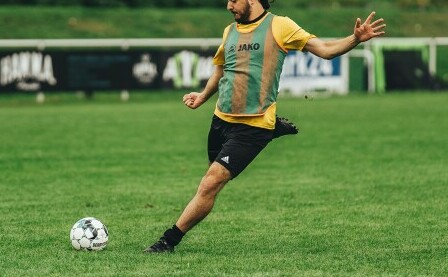
b) Controlled Strikes
- Emphasize the importance of controlled strikes over wild shots. Strikers should focus on accuracy and placement rather than solely relying on power.
- Practice precision shooting drills that challenge strikers to hit specific targets within the goal.
iii) Composure in Front of Goal
Composure separates good strikers from great ones. Here’s how young strikers can maintain their cool in front of goal:
a) Mental Preparation
- Encourage strikers to visualize success before taking a shot. Mentally rehearsing the desired outcome can instill confidence and composure.
- Remind players to focus on the process rather than the outcome. Concentrate on executing the shot technique correctly rather than worrying about the result.
b) Decision Making
- Teach strikers to assess the situation quickly and make informed decisions. This includes choosing the appropriate shooting technique and target based on the goalkeeper’s positioning and the angle of the shot.
- Emphasize the importance of staying calm under pressure. Remind players that composure leads to better decision-making and, ultimately, more successful shots.
By honing their instep drive technique, prioritizing placement over power, and maintaining composure in front of goal, young strikers can become more accurate and effective goal-scorers. Encourage them to practice these skills regularly to enhance their shooting accuracy and contribute more to their team’s success.
Volleying
Mastering the art of volleying can elevate a player’s goal-scoring capabilities and add flair to their game.
Let’s delve into three essential aspects of volleying that every aspiring striker should focus on:
i) Body Positioning
Body positioning is crucial for executing successful volleys. Here’s how to achieve the correct stance:
a) Non-Kicking Foot Placement
- The strikers must position their non-kicking foot beside the ball, slightly ahead of it, to provide stability and balance.
- Teach them to bend their knees slightly and lean the upper body forward to maintain control and generate power.
b) Balance and Stability
- Emphasize the importance of maintaining balance throughout the volleying motion.
- Encourage players to keep their eyes on the ball and adjust their body position as needed to strike the ball cleanly.
ii) Timing the Volley
Timing is everything when it comes to volleying. Here’s how young strikers can improve their timing:
a) Reading the Flight of the Ball
- Teach players to anticipate the trajectory of the incoming ball by tracking its flight path.
- Emphasize the importance of timing the strike to meet the ball at the optimal moment, ensuring a clean connection.
b) Clean Strike with the Instep
- Instruct players to use the instep (laces) of their foot to strike the ball cleanly.
- Encourage a controlled swing of the kicking leg, focusing on accuracy and technique rather than sheer power.
iii) Practice and Repetition
As with any soccer skill, practice is essential for mastering volleys.
Here’s how young strikers can improve through dedicated repetition:
a) Drills and Exercises
- Set up drills that simulate game scenarios, such as crossing and volleying exercises.
- Provide opportunities for players to practice volleys from different angles and heights to develop versatility.
b) Consistency and Persistence
- Encourage players to practice volleys regularly, both during team training sessions and on their own.
- Emphasize the importance of persistence and patience, as mastering volleys takes time and repetition.
Heading
Heading the ball is a fundamental skill for any soccer striker.
Let’s explore three key aspects of heading technique that young players should focus on:
i) Head and Eyes
Using the Forehead: Instruct young strikers to use their forehead to make contact with the ball during heading situations. This provides the largest surface area for a controlled and accurate header.
Eyes on the Ball: Emphasize the importance of keeping their eyes open and on the ball throughout the heading motion. This helps players judge the flight and trajectory of the ball more accurately, leading to better timing and execution.
ii) Timing and Jumping
Timing the Jump: Teach young strikers the importance of timing their jumps to meet the ball at its highest point.
Waiting too long or jumping too early can result in mistimed headers and missed opportunities.
Maximizing Vertical Leap: Encourage players to focus on explosive jumps to gain height and reach the ball effectively.
Emphasize the need to bend their knees and use their arms to generate upward momentum.
iii) Defensive Headers
Clearing the Ball: Explain to young strikers that heading isn’t just about scoring goals—it’s also about defensive responsibilities. Encourage them to practice defensive headers, where they aim to clear the ball away from their own goal to prevent scoring opportunities for the opposition.
Positioning and Timing: Teach defensive headers in the context of defensive positioning and timing.
Emphasize the importance of being in the right position to intercept crosses and set pieces, and timing the header to clear the ball decisively.
Practice and Application
Encourage young strikers to practice heading regularly through drills and match simulations. Provide opportunities for them to work on attacking headers in crossing and finishing exercises, as well as defensive headers in defensive scenarios.
Emphasize the importance of dedication, hard work, and perseverance in mastering heading technique. With consistent practice and a willingness to learn, young strikers can develop into proficient headers of the ball, contributing both defensively and offensively to their team’s success.
Parental Support
Nurturing the Perfect Soccer Striker
As parents, you play a pivotal role in your child’s soccer journey. Your support, guidance, and involvement can significantly impact their development as a soccer striker.
Here are some ways you can provide the necessary support for your young soccer enthusiast:
i) Encourage Their Passion:
The first and most crucial step is to encourage your child’s passion for soccer. Let them know that you support their interest and are excited to see them pursue their dreams on the field.
ii) Provide Proper Equipment:
Ensure that your child has access to the necessary soccer gear, such as cleats, shin guards, soccer balls, and appropriate clothing. Well-fitted and comfortable equipment is essential for their safety and performance.
iii) Attend Matches and Practices:
Make an effort to attend your child’s soccer matches and practices. Your presence shows them that you value their commitment and progress in the sport. Offer positive encouragement and constructive feedback.
iv) Foster a Healthy Lifestyle:
Promote a healthy lifestyle by encouraging balanced nutrition and hydration. Proper diet and hydration are vital for their energy levels and overall well-being on the field.
v) Emotional Support:
Soccer can be emotionally challenging at times. Be a source of emotional support when your child faces setbacks, losses, or tough moments. Reassure them that setbacks are part of the learning process.
vi) Balance Academics and Soccer:
Help your child strike a balance between academics and soccer. Encourage them to excel in school while pursuing their soccer goals. A strong educational foundation is essential for their future.
vii) Seek Quality Coaching:
Invest in quality coaching for your child. Enroll them in reputable soccer academies or clubs with experienced coaches who can provide proper training and guidance.
viii) Foster Discipline and Responsibility:
Teach your child the importance of discipline and responsibility. These qualities are not only essential on the field but also in life. Soccer can instill valuable life skills.
ix) Be a Role Model:
Lead by example by demonstrating good sportsmanship and a positive attitude toward soccer. Your behavior and attitude can influence your child’s perspective on the sport.
x) Encourage Teamwork:
Emphasize the value of teamwork and camaraderie on and off the field. Encourage your child to be a supportive teammate and build positive relationships with fellow players.
xi) Avoid Excessive Pressure:
While it’s natural to want the best for your child, avoid placing excessive pressure on them to perform. Allow them to enjoy the game and develop at their own pace.
xii) Respect Their Goals:
Respect your child’s goals and aspirations in soccer. Their ambitions may change over time, so be open to adjusting your level of support accordingly.
Remember that every child’s soccer journey is unique, and not all may aspire to become professional players. Your support, regardless of their ultimate goals, will help them develop a love for the game, gain important life skills, and enjoy the process of becoming a well-rounded individual through soccer.
In nurturing their passion and providing the right support, you contribute significantly to their development as a soccer striker and, most importantly, as a happy and confident young individual.
Take away
Remember, it’s important to make soccer fun for children. Encourage them to enjoy the game, and they will be more likely to continue playing and improving.
I really hope that you find these tips useful and that they help you to train 12 year old’s to take soccer striking to the next level.
As a coach, trainer, or a parent, what is your opinion about the techniques discussed in this article?? If you have questions, or need clarification, or suggestions please lets discuss in the comments section below.
Happy training
Here’s a little transparency: Our website contains affiliate links. This means if you click and make a purchase, we may receive a small commission. Don’t worry, there’s no extra cost to you. It’s a simple way you can support our mission to bring you quality content.

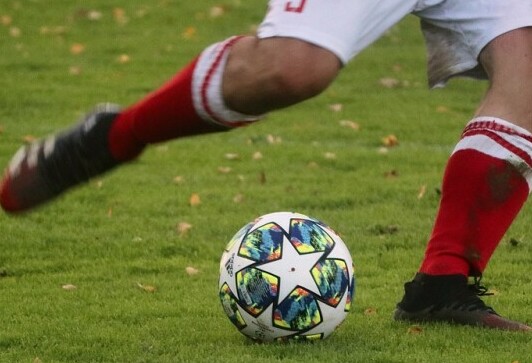

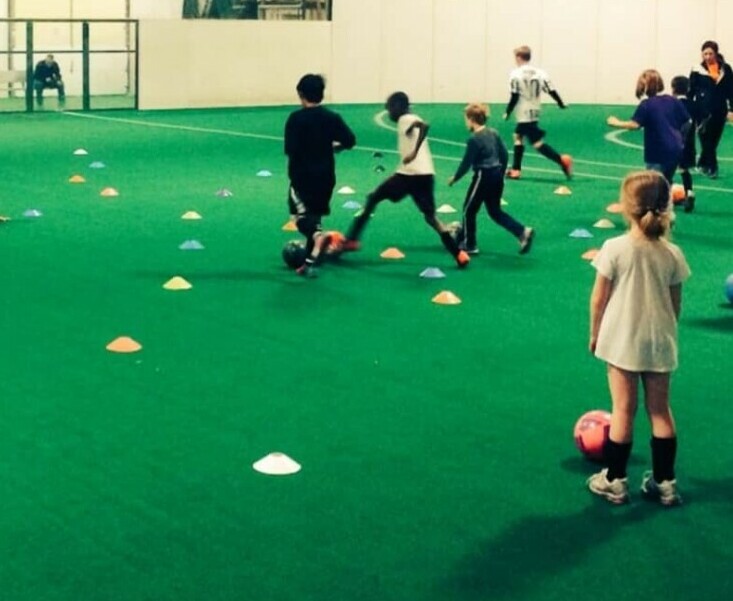

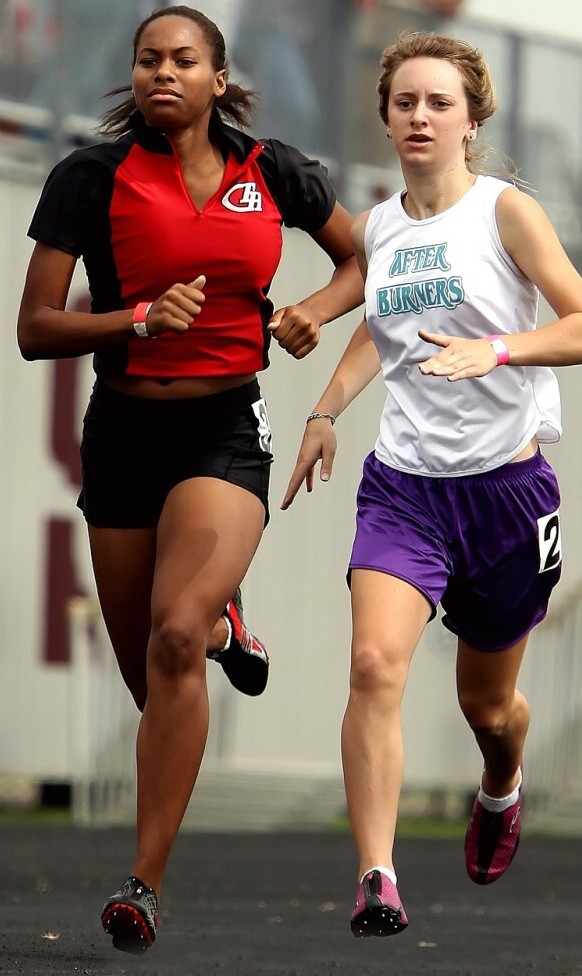
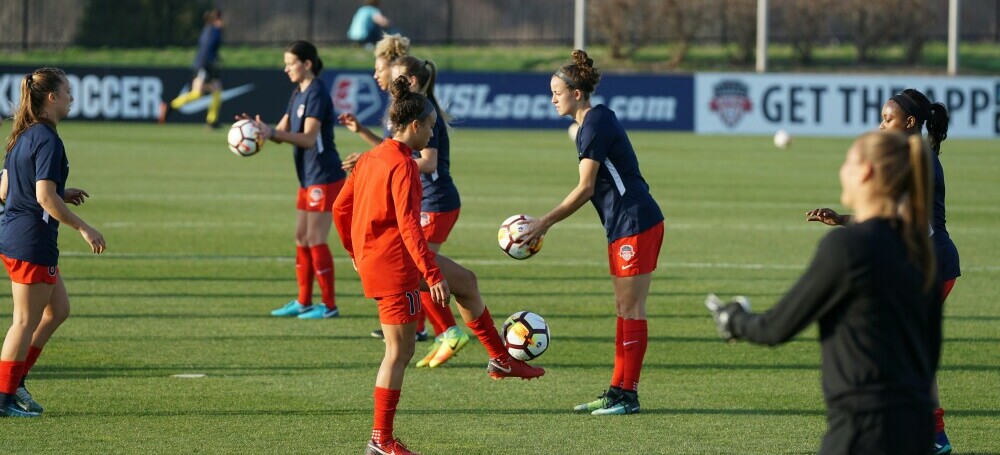
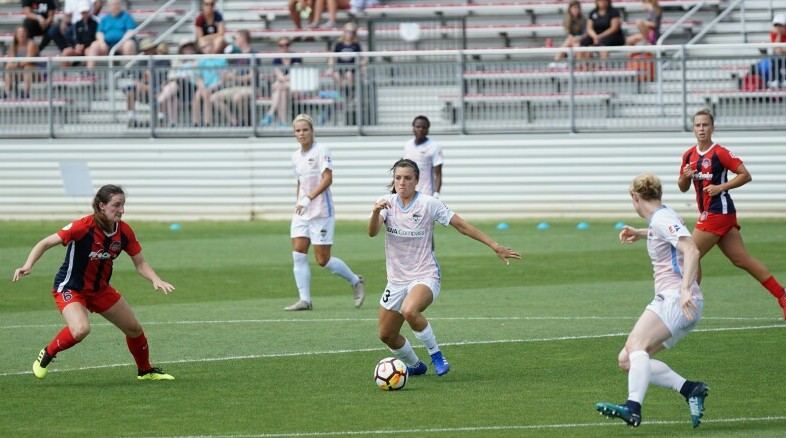
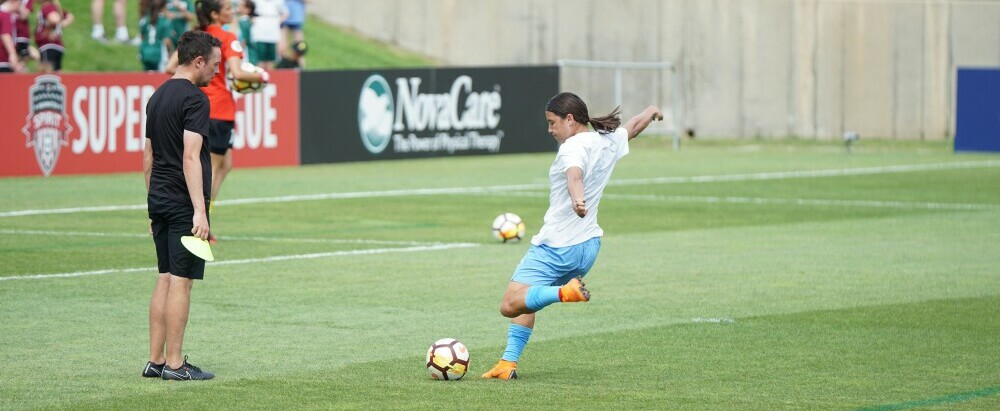
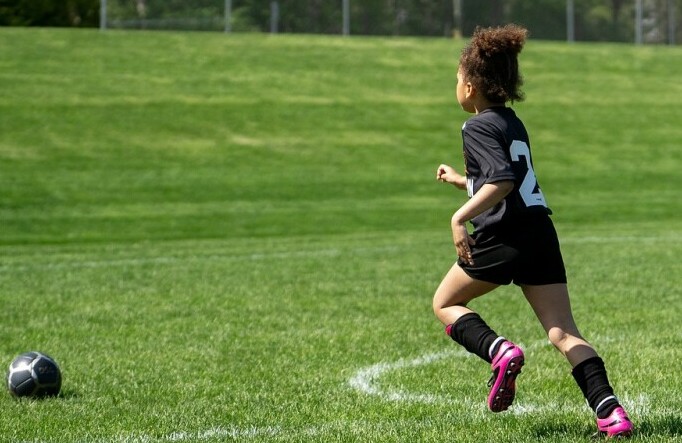
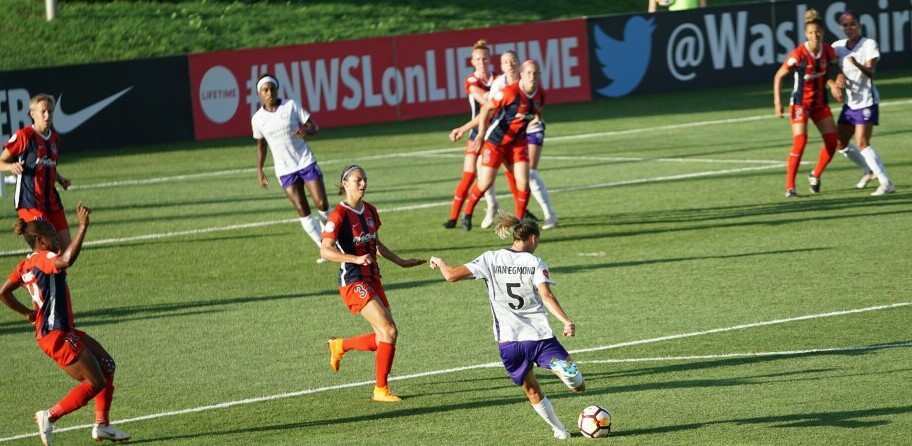

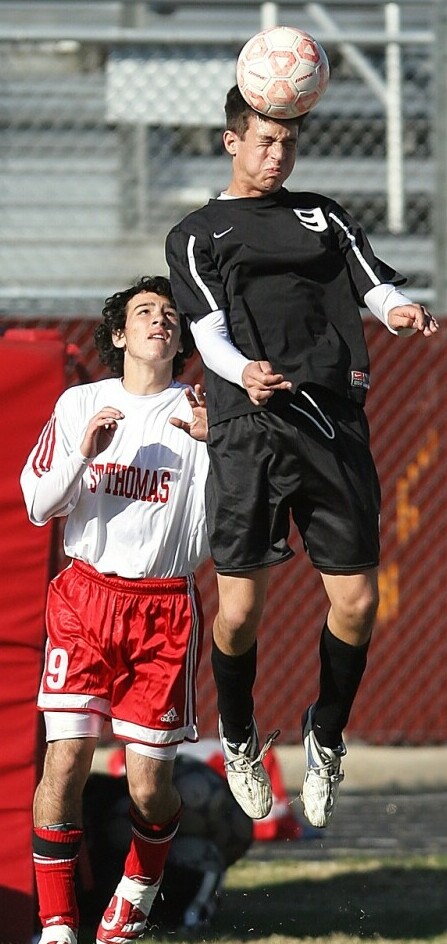
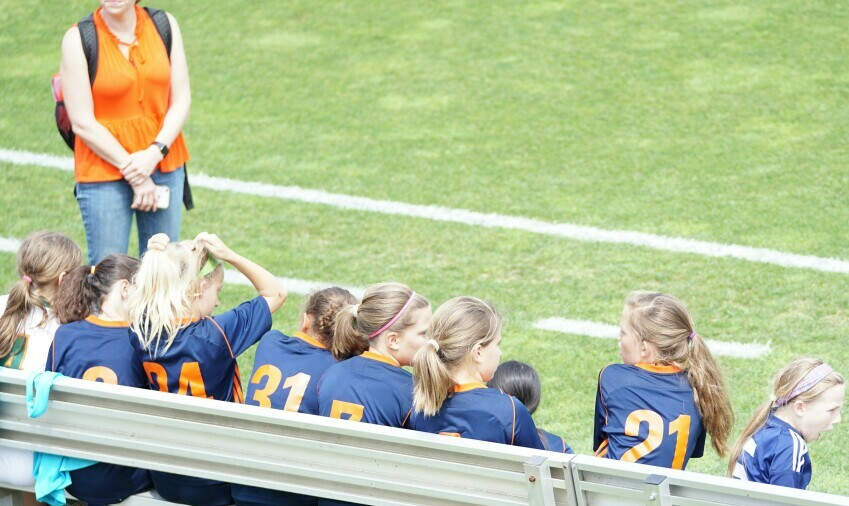
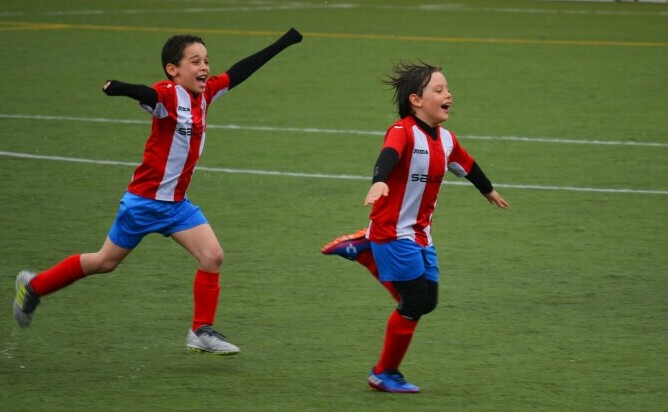
Hello Your article offers valuable advice for young soccer strikers, emphasizing precision, composure, and practice. You highlight techniques such as controlled striking, volleying, and heading, while also stressing the importance of parental support and maintaining a healthy balance between soccer and other aspects of life. I like your article because it provides a comprehensive guide for coaches, trainers, and parents to help young players improve their skills and enjoy the game. Well done.
Thank you Ela. I really hope the article will help a lot of parents and coaches with strikers training. I will definitely write more articles on young soccer strikers.